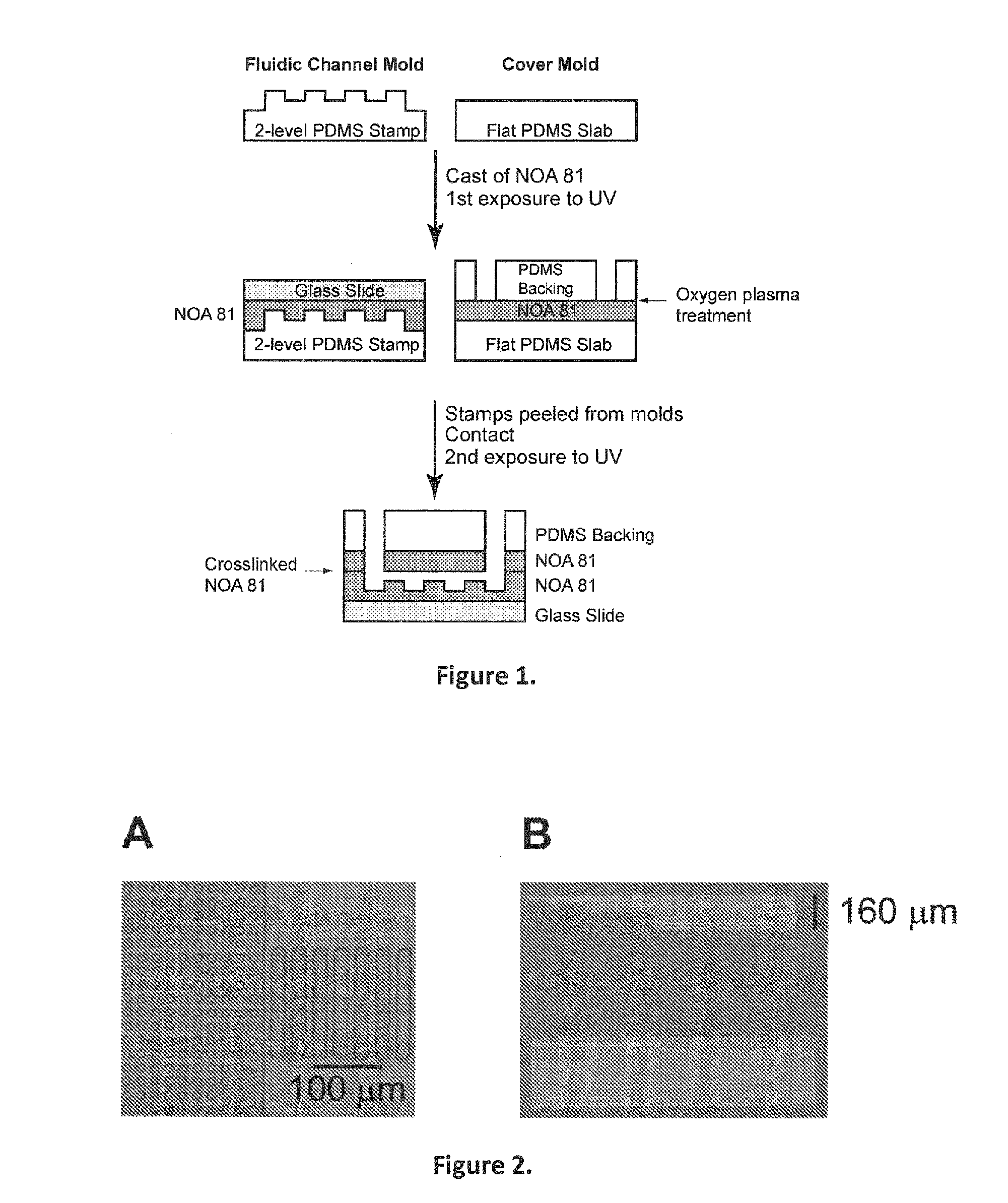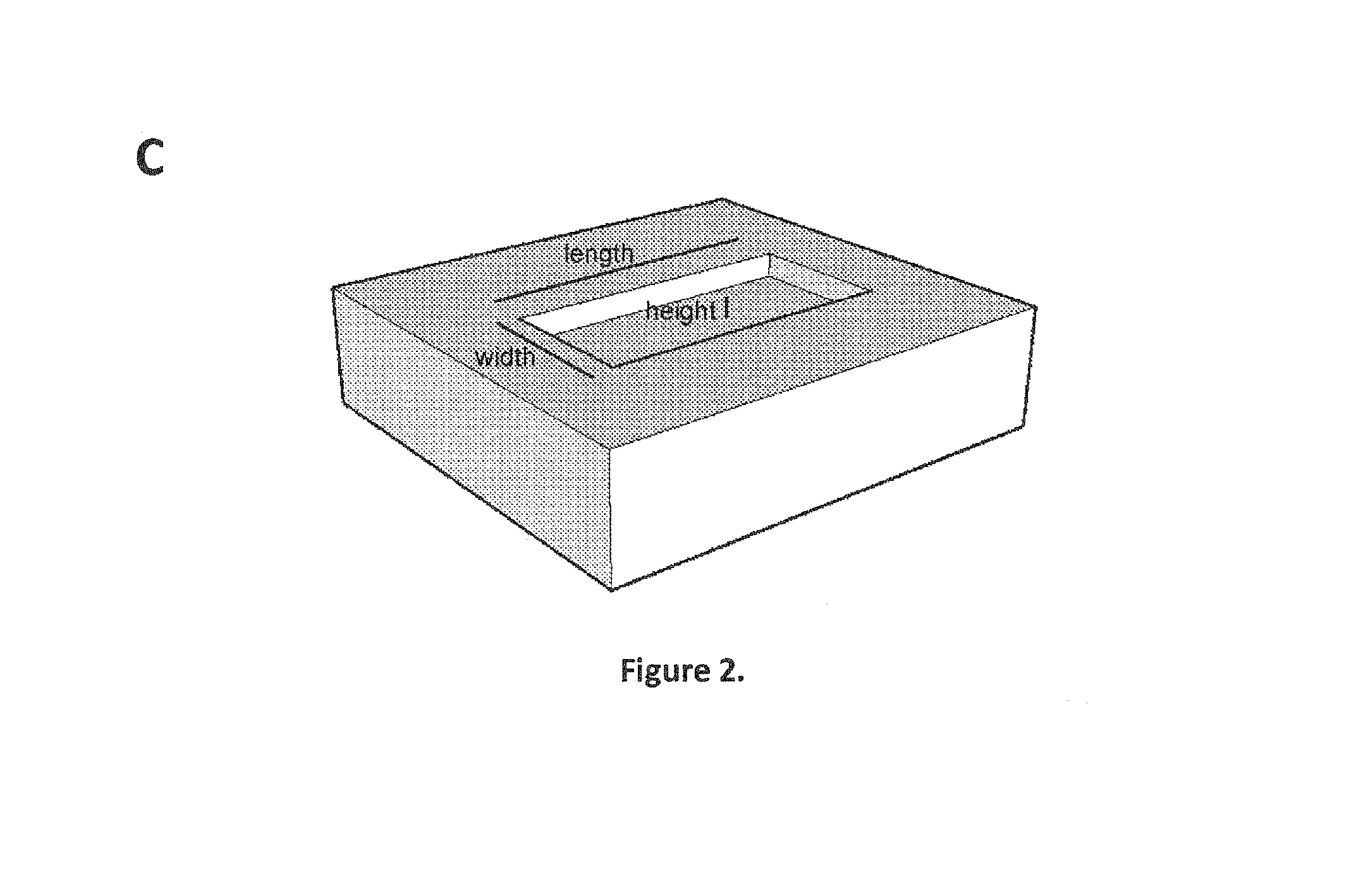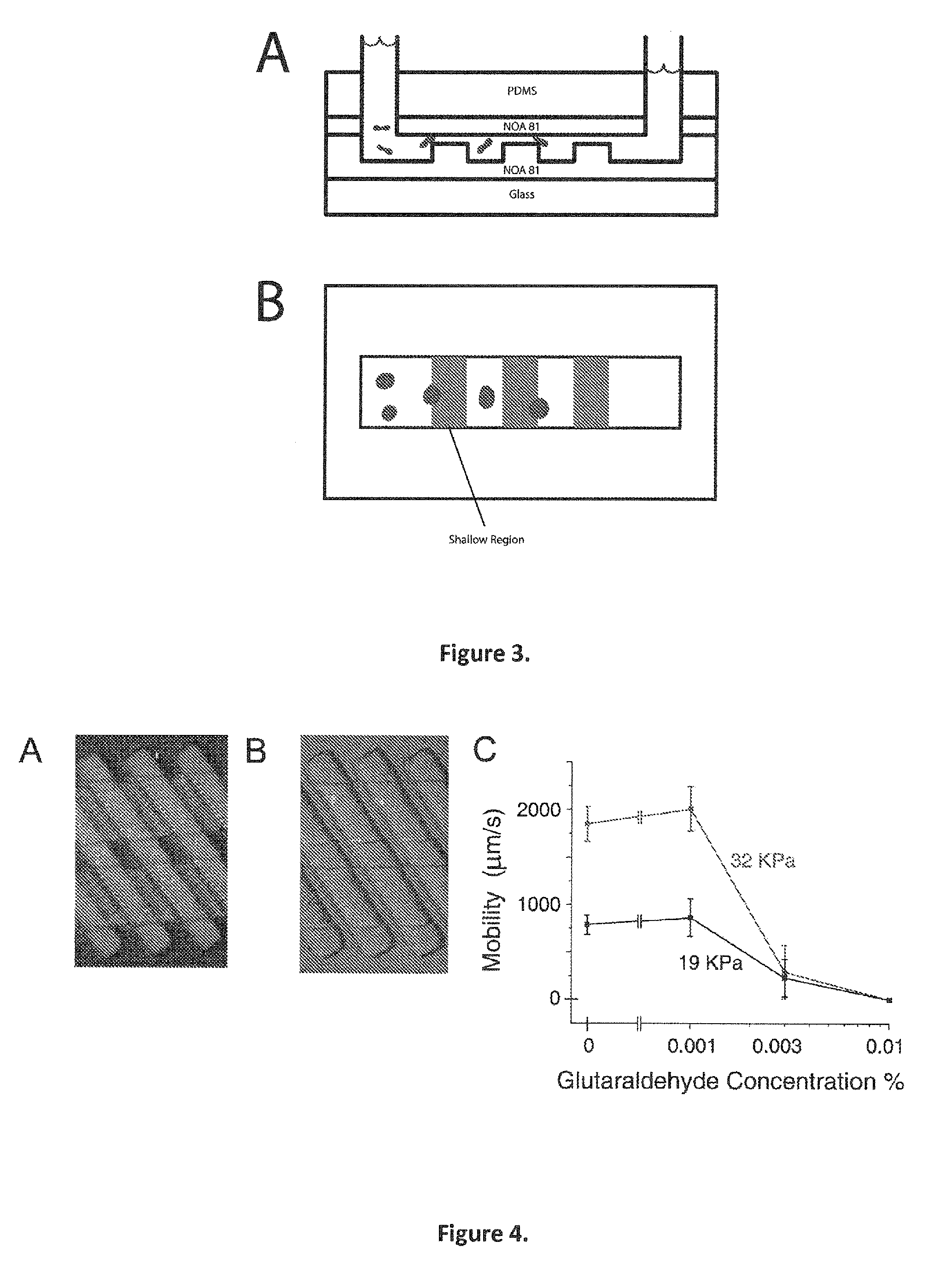Continuous-flow deformability-based cell separation
a deformation-based cell and flow technology, applied in biomass after-treatment, instruments, enzymology, etc., can solve the problems of organ failure, coma, and ultimately death, and achieve the effect of reducing or eliminating the clogging of said sorter
- Summary
- Abstract
- Description
- Claims
- Application Information
AI Technical Summary
Benefits of technology
Problems solved by technology
Method used
Image
Examples
example 1
Fabrication of a Microseparator
[0185]In one embodiment, to construct a device, the following procedure was used:[0186]1. Holes were punched in a PDMS backing with a biopsy punch, leaving the bores in place.[0187]2. Scotch tape was used to remove dust and contaminants from the PDMS backing.[0188]3. Glass slide was cleaned with tissue paper (such as “kimwipe”).[0189]4. Glass slide and the PDMS backing were placed in oxygen plasma (2 minutes vacuum pump, 1 minute oxygen plasma exposure).[0190]5. A drop of NOA was placed on the flat PDMS Slab and another drop on the 2-level PDMS Stamp.[0191]6. The PDMS Backing was pushed on the Flat PDMS Slab, being careful to eliminate any trapped bubbles.[0192]7. The Glass Slide was pushed on the 2-level PDMS stamp being careful to eliminate any trapped bubbles.[0193]8. Both sandwiched components were exposed to a UV DNA gel viewer for 1 minute and 20 seconds.[0194]9. Bores and NOA 81 were removed from the PDMS Backing.[0195]10. The pieces from the 2-...
example 2
Operation of the Sorter
[0199]With reference to FIG. 4A, a solution of PBS 1× and 0.2% w / v Pluronic F108 (a surfactant) and Bovine Serum Albumin 1% w / v (another surfactant) was prepared. The device was filled with this solution by applying pressure to one of the reservoirs. 1 μL of whole blood was mixed with 100 μL of this solution. The mixture was injected into the entrance reservoir of the device shown by using a syringe. The pressure difference between the two reservoirs was 40 kPa and was generated by using a pressure regulator. The cell concentration was approximately 0.5% hematocrit. Mobility was measured by tracking individual cells over a distance of 100 μm.
example 3
Operation of the Microseparator
[0200]With reference to FIG. 6, the solution used in this device is the same as that used in example 2. To create the Glutaraldehyde-treated cells, 1 μL of whole blood was mixed in 0.003% Glutaraldehyde in PBS 1× and allowed to sit for 30 minutes. The cells were then washed 3 times with the PBS-Pluronic-BSA solution. The pressure difference across the reservoirs was 1 atmospheres vertically and 1 atmospheres horizontally. 100 cells were measured for each population at a displacement of 550 μm from the injection point. The shallow region of the device was 2.1 μm and the deep region of the device was 8.8 μm. 20 sorting units were in the device array, with a period between units of 20 μm. The operation temperature was room temperature, 23° C. Locations were measured as cells passed 550 μm from the point of injection.
PUM
 Login to View More
Login to View More Abstract
Description
Claims
Application Information
 Login to View More
Login to View More - R&D
- Intellectual Property
- Life Sciences
- Materials
- Tech Scout
- Unparalleled Data Quality
- Higher Quality Content
- 60% Fewer Hallucinations
Browse by: Latest US Patents, China's latest patents, Technical Efficacy Thesaurus, Application Domain, Technology Topic, Popular Technical Reports.
© 2025 PatSnap. All rights reserved.Legal|Privacy policy|Modern Slavery Act Transparency Statement|Sitemap|About US| Contact US: help@patsnap.com



